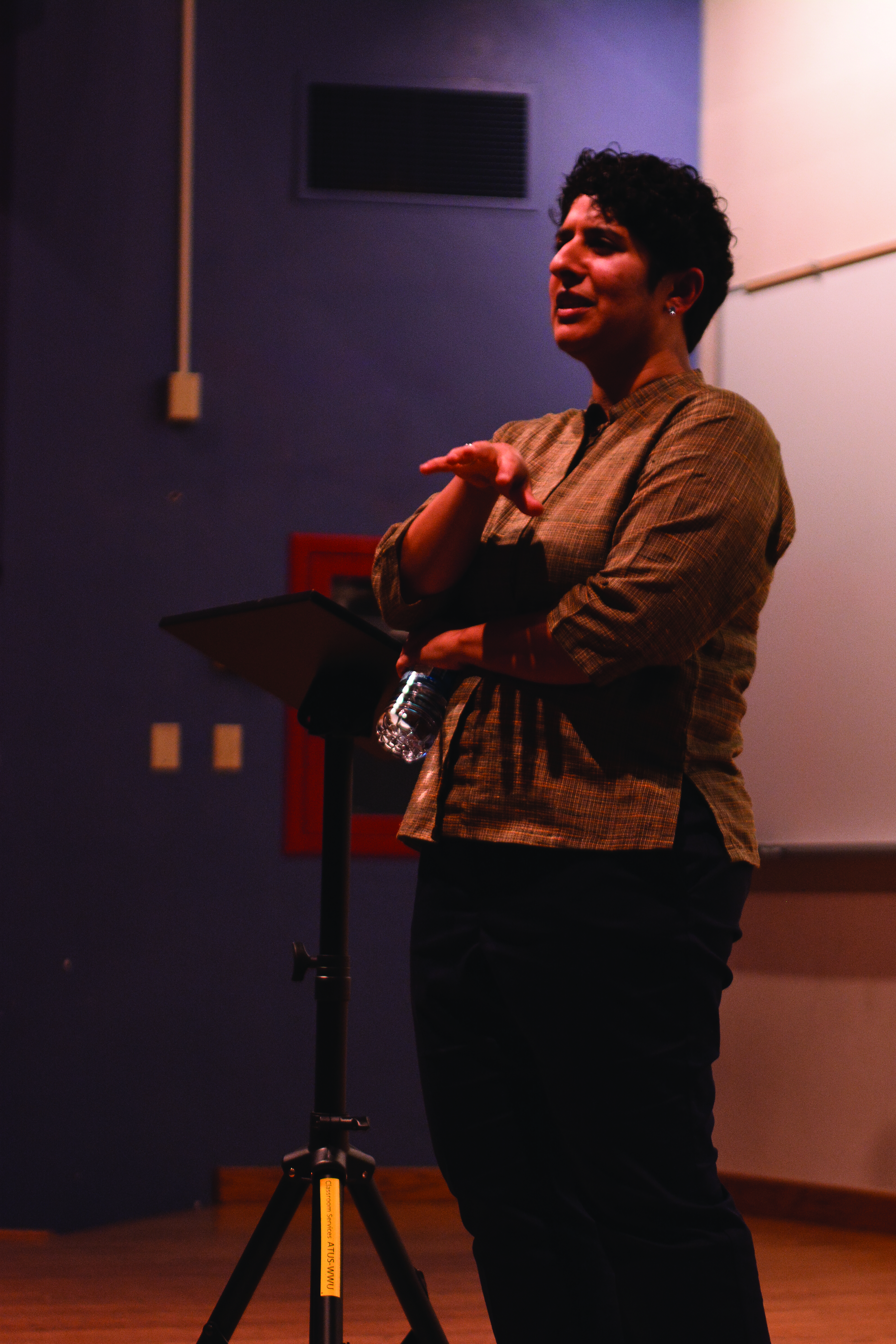By Chris Beswertherick
At perhaps one of the most scholarly lectures hosted at Western, Dr. Michael Berenbaum, the former head director of the United States Holocaust Memorial Museum in Washington, D.C. and academy award winner, visited Western to discuss the history of the Holocaust.
Western President Sabah Randhawa attended this lecture, and he introduced the speaker and the organizations involved. Western, before this school year began, created the Ray Wolpow Institute for Study of Holocaust, Genocide, and Crimes Against Humanity, directed by German professor Sandra Alfers. The institute, using this as their inauguration, had Dr. Berenbaum deliver the inaugural speech.
The institute received its name from a former professor, Ray Wolpow, and will teach about holocaust education and genocide. These topics are paramount in the institute, and are studied to prevent them from reoccurring. In fact, Dr. Berenbaum, who taught at the United States Naval Academy at West Point, was appointed to teach some holocaust and genocide courses for this reason. He said that unit is what all first-years begin learning at the Naval Academy. The education is vital, and Western has now adopted this study.
Berenbaum divided his lecture into three themes: the history of the Holocaust, its implications and the importance of Holocaust education.
There are six words, according to Berenbaum, that are essential to Holocaust studies: definition, deportation, expropriation, concentration, death camps and mobile killing units. When going through the history of the holocaust, Berenbaum clearly related and transitioned all information, while also highlighting those six words.
Adolf Hitler had a multi-faceted agenda that included not only genocide, but rather goals that much of Germany wanted. Hitler sought to unite Germany and progress the country. Hitler consolidated his power over time; first by being elected, but then by more dictatorial means. Berenbaum said Hitler made it more difficult for the members of the German government to vote. Hitler would intimidate and find ways to prevent certain members from voting, which resulted in the Nazi party becoming the only legally practiced political party. All other parties were outlawed.
Now having this power, Hitler began defining Jews. Berenbaum emphasized this theme of the Holocaust as Jews were defined by certain guidelines. If someone has Jewish grandparents, they would then be considered Jewish by the Nazis. Bloodlines, therefore, determined who was Jewish. Berenbaum then brought up a clash of state and church. Both institutions were defining people in terms of religion. The church could have defined someone as a Christian, but if they had Jewish grandparents, the Nazis would consider them Jewish. Berenbaum claims these definitions were the first step toward destruction.
During their reign, Nazis expropriated the Jews by running them out, killing, and expanding their territory. However, by Germany expanding, more and more Jews technically came under German jurisdiction. The growth also created a refugee crisis, as countries would not accept them into their land. Berenbaum referenced the concept of “push-and-pull.” Specifically in the case of Jews, they were pushed out from Germany by the Nazi party, and then pulled to various other countries for their positive traits.
The German “push” was killing Jews or forcing them to depart. However, Germany also began concentrating Jews together in ghettos, and then began the mass murder of Jews in 1941 with their mobile killing units and death camps. Killing became too difficult for Germans to endure, which led to an increased consumption of alcohol, and finally the psychological effect took its toll on the Nazis. The death camps were the solution for German stress, as the camps did not require many Nazis to murder, rather they used the gas chambers to eventually reach a total of 1.4 million murdered Jews.
Berenbaum said only 44 Germans killed those 1.4 million.
Even after liberating the Jews from the death camps, the Holocaust continued to affect them. The horrific living conditions in the death camps malnourished and weakened them. These serious health impacts caused the death of 13,000 more Jews more than a month after securing their freedom. The resulting deaths made survivors question how they could move on and continue their own lives.
“How does society rebuild?” Berenbaum asked.
This lecture is one of the most prestigious Western has hosted, and the Ray Wolpow Institute will teach moral codes, the history of the Holocaust and how to prevent it from happening ever again.
Photo by Jaden Moon // AS Review

